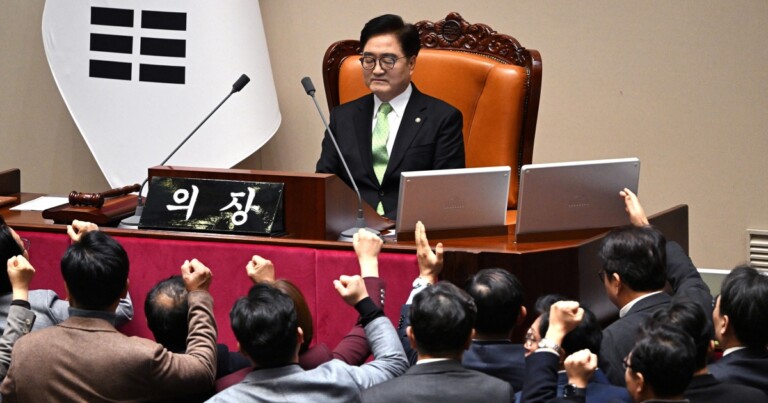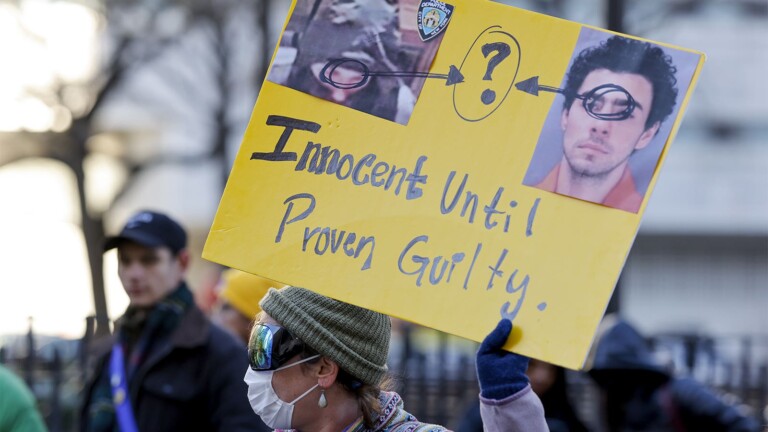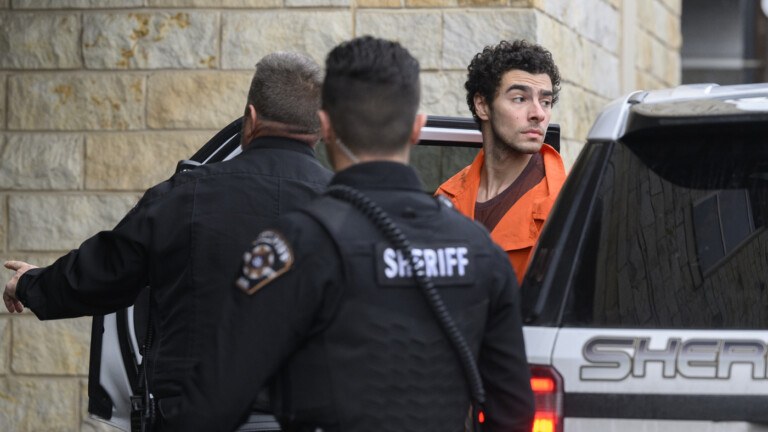Internet sleuths are trying to solve the New York CEO killing
A surveillance camera is seen at the 54th Street entrance to the New York Hilton Midtown Hotel in New York on Thursday, where Brian Thompson, the CEO of UnitedHealthcare, was fatally shot on Wednesday.
Ted Shaffrey/AP
hide caption
toggle caption
Ted Shaffrey/AP
The fatal shooting of UnitedHealthcare CEO Brian Thompson in Manhattan has set internet sleuths off on their own investigations into finding the killer and his motive, after the suspect seemingly disappeared from one of the most surveilled cities in the U.S.
Online, amateur detectives and true crime fans have been poring over police-released photos of a person of interest — one showing a smiling, unmasked man in a hoodie, seen in the lobby of a hostel the suspect stayed at beforehand — and zooming in on surveillance camera footage.
On X, Reddit, 4Chan, and other online forums, the public has weighed in with their conclusions about the brand of the suspect’s backpack, the type of gun accessory he used, and other details that could lead to tracking down the killer.
“Dude had a suppressor, which is an extremely difficult thing to acquire, especially in a state like New York,” one person said on Reddit.
Others are theorizing what kind of person would flee the scene on what police said was an unmarked e-bike, and what the suspect’s purchase says about him.
“Water and protein bar implies he cares about his health to a certain degree,” another Reddit user posited. “What kind of mad man would choose water and protein bar for their last meal.”
As the police investigation entered its third day, there was no indication that authorities had found or put a name to the gunman. Police said they believed the suspect had fled New York City on a bus.
The New York Police Department said the evidence indicates that the attack was premeditated. Carved on bullet casings found at the scene read the words “deny,” “defend” and “depose” — tactics used by insurers to deny claims, and described in a 2010 book critical of the industry titled Delay Deny Defend. As police look into whether the words indicate a motive, armchair investigators are also endorsing the idea that the attacker was driven by anger at the insurance industry.
The police have asked the public for help with its investigation, leaving its tip line open as is typical in manhunts.
“The public is important when it comes to assisting the police in these type of investigations,” David Sarni, a retired NYPD detective and adjunct professor at John Jay College of Criminal Justice in New York, told NPR on Thursday. “People said, ‘Oh, no, I spoke to him yesterday.’ These are things you look at. And that’s what you’re hoping that those tips will be — another part of the puzzle to solve this and apprehend the person who did this.”
In past high-profile cases, online sleuths have successfully tracked down suspects that have eluded the authorities. They helped identify what’s believed to be hundreds of rioters involved in the U.S. Capitol riot on Jan. 6, 2021, and their leads led to some arrests.
“The public can be essentially a force multiplier for the police,” said Wayne Logan, a professor at the Florida State University College of Law in Tallahassee, who’s written about the role of crowdsourcing in criminal investigations. “Police have limited resources, and more eyes on an issue, more minds on an issue can obviously provide advantages to the police.”
Internet sleuthing also has its pitfalls. The Boston Marathon bombing in 2013 is a famous example when online investigators got it wrong. The New York Post ran a front-page story with photos of two people — implying they were responsible for the attack — who gumshoes had misidentified as the suspected bombers. Another person named through crowdsourcing turned out to be a missing college student who had died by suicide prior to the bombings, and the finger-pointing subjected his grieving family to threats.
“There could be people acting on some improper motive, identifying an individual … and their name and reputation is tarnished when they weren’t involved at all,” Logan said.
When dubious tips are fed into the deluge of leads submitted to authorities, according to the law professor, that could squander finite police resources spent vetting the information.
In the case of Thompson’s death, there’s been a countereffort to the avid amateur search for facts. Some on social media have responded to the news of the executive’s killing by railing against the health-care industry, praising the gunman’s actions, and even villainizing those who assist the police in their investigation.
But Christian Quinn, a former deputy chief of cyber and forensics for the Fairfax County Police Department in Virginia, told The Washington Post that he suspected the investigators aren’t “really affected by online chatter of … people with opinions who don’t truly have the expertise.” But sometimes, he added, “you get that one little tidbit” that turns the investigation around.
Still, Logan, the FSU professor, said it’s important not to underestimate the power of the internet mob.
“Anything is possible with the internet, you know?” he said. “The basic concern is that the wisdom of the crowd doesn’t become the tyranny of the crowd, where essentially crowdsourcing and crowds drive criminal investigations, not more careful, systematic police investigative work.”





